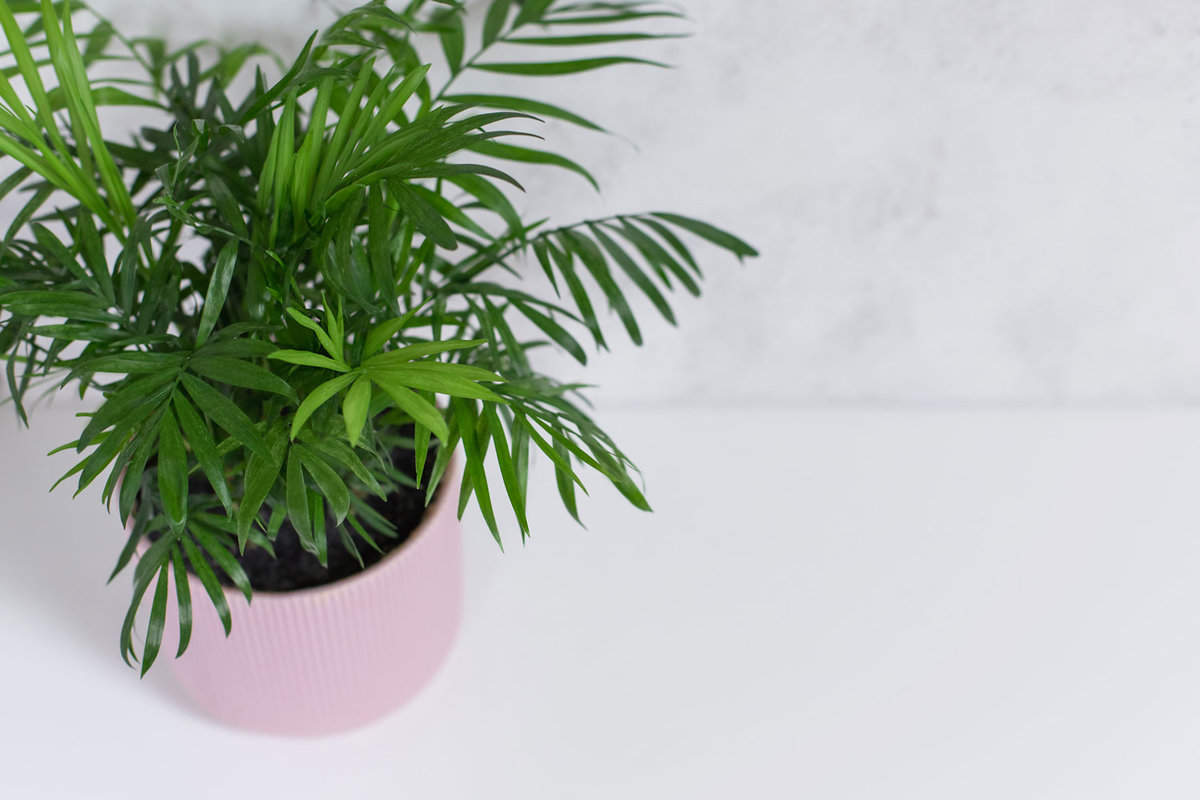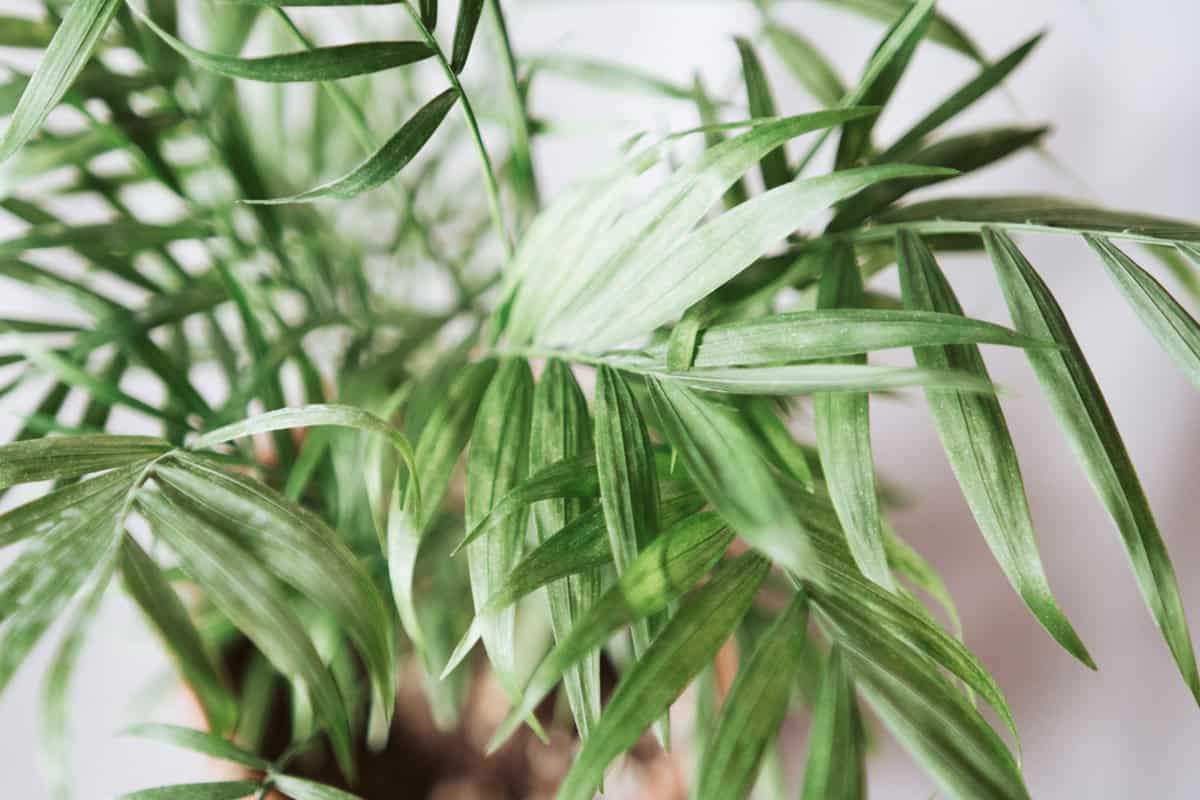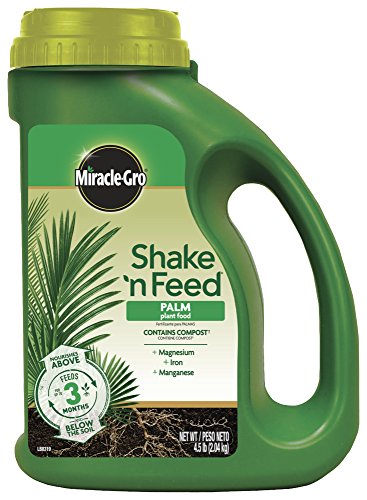Parlor palms, also known as Chamaedorea elegans, are popular indoor plants known for their lush, green foliage and adaptability to low light conditions.
With their arching fronds and narrow leaflets, these graceful palms add an elegant touch to any interior space.
However, you might be wondering how to make your parlor palm grow faster to achieve that lush green look sooner.

In this article, we'll guide you through expert-recommended practices that will boost your parlor palm's growth.
From proper watering techniques and nutrient requirements to the ideal light conditions, we'll share essential tips to transform your parlor palm into a thriving, vibrant plant.
Remember, patience is key. While some of these tips might speed up the process slightly, it's important to remember that parlor palms naturally grow at a slow to moderate pace.
By providing consistent care and proper conditions, you'll soon be rewarded with a beautiful, healthy parlor palm to brighten up your living space.
Optimal Conditions for Parlor Palm Growth
When it comes to enhancing the growth of your parlor palm, several factors come into play.
By understanding your plant's requirements and providing optimal conditions, you'll see your parlor palm thrive with lush green foliage.
Light Requirements
Parlor palms thrive in bright indirect light.
While they can tolerate low-light conditions, it's best to place your parlor palm near a north- or east-facing window to ensure optimal light levels.
Remember, too much direct sunlight may damage the leaves, causing them to turn yellow or brown.

Temperature and Humidity
Parlor palms are sensitive to temperature fluctuations, so it's imperative to maintain a consistent environment.
Keep the temperature between 65-80°F (18-27°C) for a healthy, thriving plant.
Avoid placing your palm near an air conditioner or heater that might alter temperatures suddenly.
When it comes to humidity, parlor palms prefer low to medium levels.
If your space is particularly dry, you can use a humidifier or place a water-filled tray with pebbles near the plant's pot.
Misting the leaves periodically is another way to maintain proper moisture.
Soil Type
Selecting the right soil is essential for your parlor palm's growth.
Choosing a well-draining, loose, and slightly acidic potting mix will help the plant grow better. Here's a simple recipe for creating an ideal soil mix:
- 2 parts peat moss
- 1 part perlite
- 1 part coarse sand
This mix is perfect for providing appropriate drainage and moisture retention.
Try this Soil Sunrise palm potting mix on Amazon.
Watering Your Parlor Palm
Watering your parlor palm properly is essential for its growth and overall health.
Since parlor palms prefer moderately moist soil, it's important to find a balance between over-watering and under-watering.
To begin, make sure your parlor palm is planted in a well-draining pot with drainage holes, as this will help prevent root rot.
When it comes to watering, it's best to use tepid water, as cold water can shock the plant.

You may consider using water from your dehumidifier or letting water sit for a day before using it on your plants, as this allows chlorine to evaporate and other minerals to settle at the bottom.
Water your parlor palm when the top inch of the soil feels dry to the touch. Be cautious not to over-water, as this can lead to root rot.
Instead, water generously but infrequently, allowing the soil to dry out slightly between waterings.
Always empty the saucer under the pot after watering to avoid allowing the plant to sit in standing water.
Remember, consistency is key, so keep monitoring your parlor palm's moisture levels and adjust your watering routine as needed.
Fertilizing Your Parlor Palm
Your parlor palm will greatly benefit from a proper fertilizing routine.
Using the right fertilizer can help your palm grow faster and maintain its lush green appearance.
The 8-0-12-4 Mg palm fertilizer is recommended by the University of Florida scientists, as it provides the right balance of nutrients required by palms.
Try this MiracleGro Shake'nFeed palm plant food on Amazon.
Make sure to fertilize your parlor palm four times a year, evenly spaced throughout the year.
Use a slow-release fertilizer that contains nitrogen, potassium, and magnesium.
This ensures a constant supply of nutrients over time, promoting steady growth and preventing potential nutrient deficiencies.
Fertilizer Application
When applying fertilizer, be careful not to overdo it. Too much fertilizer can harm your parlor palm and lead to root burn, yellowing leaves, or even stunted growth.
Here's a general guideline for applying fertilizer to your parlor palm:
1. Measure the Right Amount of Fertilizer
Follow the manufacturer's instructions and avoid exceeding the recommended amount.
2. Broadcast the Fertilizer
Spread the fertilizer evenly around the base of your palm, making sure it covers the root zone.
3. Water Thoroughly
After applying the fertilizer, water your parlor palm generously to help the nutrients penetrate the soil and reach the roots of your plant.
Pruning Your Parlor Palm'

Pruning your parlor palm is a great way to keep it looking its best and encourage healthy growth.
While these beautiful plants are generally low-maintenance, some care is necessary to keep them thriving.
First thing's first: always remove any dead or brown leaves as they can sap energy from your parlor palm that could be directed towards new growth.
To do this, simply use a pair of clean, sharp scissors or pruning shears, and make a clean cut near the base of the affected frond.
Remember, be gentle - you don't want to damage the trunk!
If you spot any loose or fallen debris around the base of your parlor palm, such as spent flowers or fruit, be sure to remove these as well.
This not only helps maintain your plant's appearance but also prevents potential pest issues or fungal infections.
As parlor palms grow slowly, you won't need to prune them too often. Typically, pruning once or twice a year is sufficient to keep your palm in good shape.
Over-pruning can lead to stress and hinder growth, so it's essential to be mindful when trimming away.
Repotting Your Parlor Palm
Repotting your parlor palm is an essential step to encourage faster growth and maintain its health.

Repot at the Right Time
First, choose the right time to repot. Parlor palms typically need repotting every couple of years, preferably in the spring when the plant is actively growing.
Observe your plant - if the roots are starting to become pot-bound, it's a good indicator that repotting is necessary.
Choose the Right Pot Size
Select a new pot that's slightly bigger (about 2 inches wider) than the current pot.
This will give the roots some room to grow without giving them too much space, which can lead to excessive moisture retention in the soil.
Make sure the new pot has adequate drainage holes to prevent waterlogging.
Prepare the Right Potting Mix
Before you start, prepare a fresh well-drained potting mix. Parlor palms prefer a soil mix that is light and allows for good airflow.
A common blend includes peat moss, perlite, and a bit of compost or organic matter.

Repot with Care
To repot, gently remove your parlor palm from its current pot. Take care not to damage the roots in the process.
If the plant is too firmly attached to the pot, slide a knife or flat object around the edges to loosen it.
Once you have removed the plant, examine the root system. Trim any damaged, dead, or mushy roots with sterilized scissors. This keeps the plant healthy and allows the roots to focus on new growth.
Now it's time to place your palm into the new pot. Add a layer of potting mix at the bottom and position your palm in the center.
Adjust the plant to make sure it's sitting at the same depth as it was before. Fill the remaining space around the roots with the fresh potting mix, gently firming the soil as you go to remove any air pockets.
Repotting After Care

After repotting, water your parlor palm thoroughly to help the plant settle into its new home.
Keep an eye on your palm for the next few weeks, as it may need some extra attention.
Maintain a consistent watering schedule and avoid fertilizing for 4-6 weeks to let your palm adjust and grow its roots in the new pot.
By following these steps, you'll be on your way to fostering a healthy and thriving parlor palm that will grow faster and present you with lush, beautiful greens to enjoy in your home.
Preventing Diseases and Pests

One crucial aspect of maintaining its lush green appearance is by preventing diseases and pests from damaging it.
Common Diseases
Parlor palms can be affected by several diseases, such as leaf spots and root rot.
To minimize the risk of these diseases, it's important to follow proper care practices:
- Ensure your parlor palm has well-draining soil to prevent excess water from causing root rot.
- Avoid overwatering, as it could lead to fungal infections and root rot.
- Prune away dead or yellowing leaves to maintain airflow and prevent the spread of diseases.
Typical Pests
Some common pests that could attack your parlor palm include spider mites, mealybugs, and scale insects.
You can prevent these annoying pests from wreaking havoc by following these steps:
- Keep your parlor palm clean by regularly wiping the leaves with a damp cloth to remove dust and any signs of pests.
- Avoid exposing your plant to extremely dry conditions, as it may attract spider mites.
- Inspect your plant regularly for any signs of pests, and act quickly to combat them with natural remedies such as neem oil or insecticidal soap.
By keeping an eye out for these common diseases and pests, you'll be able to provide your parlor palm with the best possible care for lush and healthy growth.
Should I Trim Brown Tips on My Parlor Palm for Better Growth?

Trimming brown tips on your parlor palm can help maintain its appearance, but it won't necessarily promote faster growth.
Parlor palms are slow-growing by nature, and focusing on proper care and providing the right conditions is key to encouraging lush green growth.
Brown tips on a parlor palm could indicate a few issues, such as over-watering, under-watering, or poor air quality.
Before trimming, it's essential to identify the cause and address the underlying issue.
If the problem persists despite adjusting water and care conditions, you can consider trimming the brown tips.
Regular Routine Care is the Key
In order to make your parlor palm grow faster, provide it with the proper care and nutrients.
By following a few key tips, you can ensure your parlor palm thrives and develops lush green leaves.
For more parlor palm care tips, check out these other articles:


